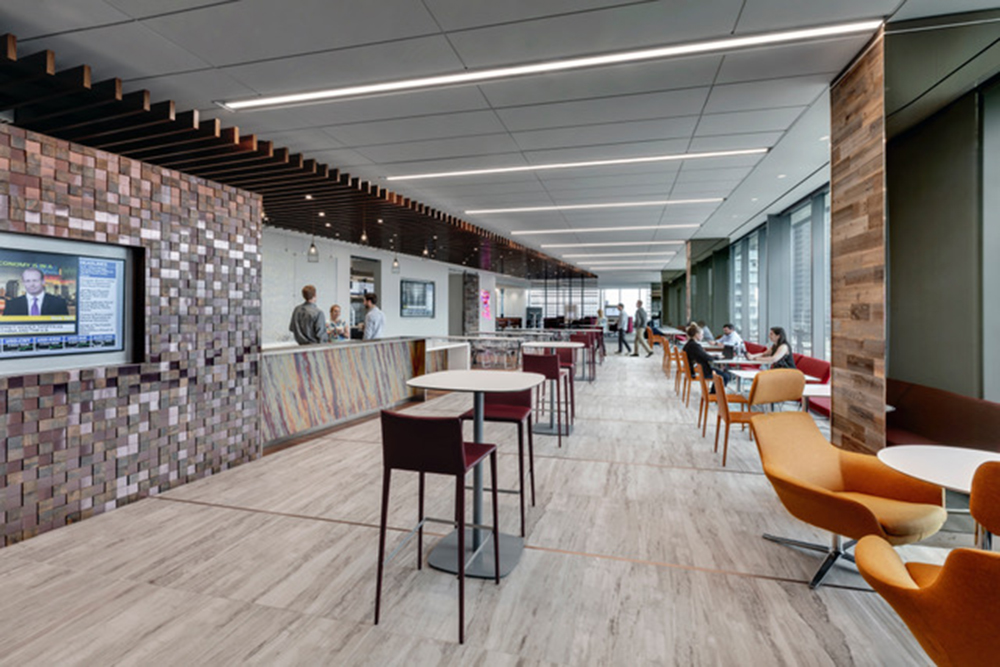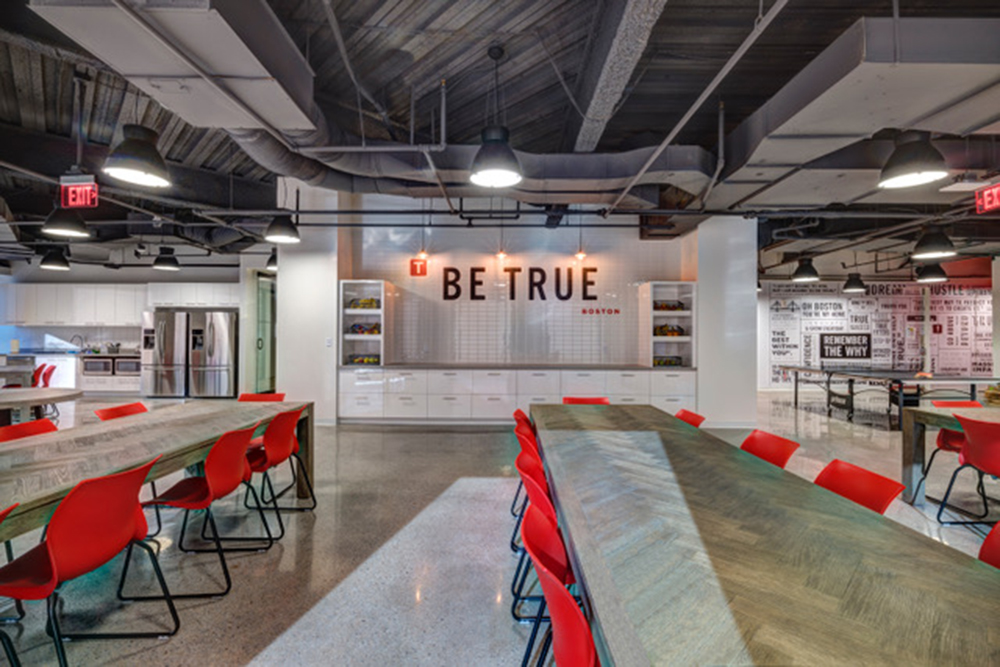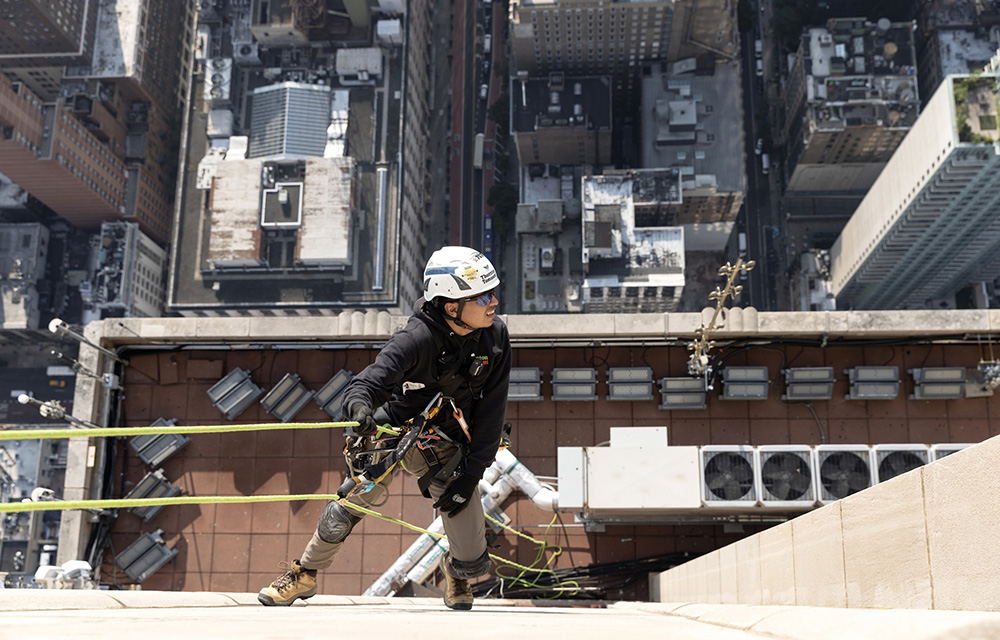Dyer Brown: Emerging trends in workplace food service

New York, NY As companies of all sizes start to think about what it will be like to return to more frequent in-person work, the lessons of a year of remote productivity have many rethinking priorities and considering reducing the office footprint. But according to workplace design experts, cafeterias and pantry amenities might actually expand in size even as areas devoted to workstations shrink.
“So many of us have grown used to handling tasks and videoconferencing from the kitchen table,” said Karen Bala, AIA, LEED AP, director of design for workplace strategy experts Dyer Brown. “A well-appointed cafeteria has everything that most of us need to get our work done, including space for informal meetings. With more companies considering a hybrid remote/in-person model to reduce their workplace footprint, cafeteria and pantry amenities are a potent use of square footage.”
“For many, the opportunity to ‘break bread’ with colleagues and clients is a major incentive to return to in-person work,” Bala said. “More than ever, the office is for eating.”

To Bala’s point, modern food service areas typically offer WiFi and integrated connections for powering laptops and devices and provide a setting for socializing and informal collaboration, which most of us are looking forward to after a year of relative isolation. Drawing from Dyer Brown’s recent work for building owners and individual companies ranging from small firms to global Fortune 500 brands, she suggests a few trends to watch for in this area:
Lightweight movable furnishings allow the cafeteria or pantry to be quickly reorganized for all-hands meetings, training sessions, and even low-impact fitness classes. “The furniture should also offer a variety of seating and table heights,” said Bala, “to accommodate different work styles.” At the same time, many commercial property owners are investing in integrated workplace management systems (IWMS) that allow tenants to alert building staff that a planned event will require a reconfiguration.
Large employers may build on the flexibility idea by foregrounding a brand-inspired, design-forward cafeteria, placed strategically near a lobby or another visitor-focused area. Making the cafeteria more visible presents a window into the company culture. In some cases, this showcase venue can double as an event space.
Building owners and major employers are increasingly considering turning over food service operations to companies like Fooda that started out as pop-up “virtual cafeteria” food services.
These operators partner with local restaurants and other providers to offer a variety of healthy, appealing menus, rotating in new cuisines daily. To address social distancing, these companies help out employers with apps for ordering and reserving a spot at a table.
NYC mayor and DOB release comprehensive façade inspection and safety study conducted by Thornton Tomasetti








.gif)
.jpg)
.gif)
.gif)